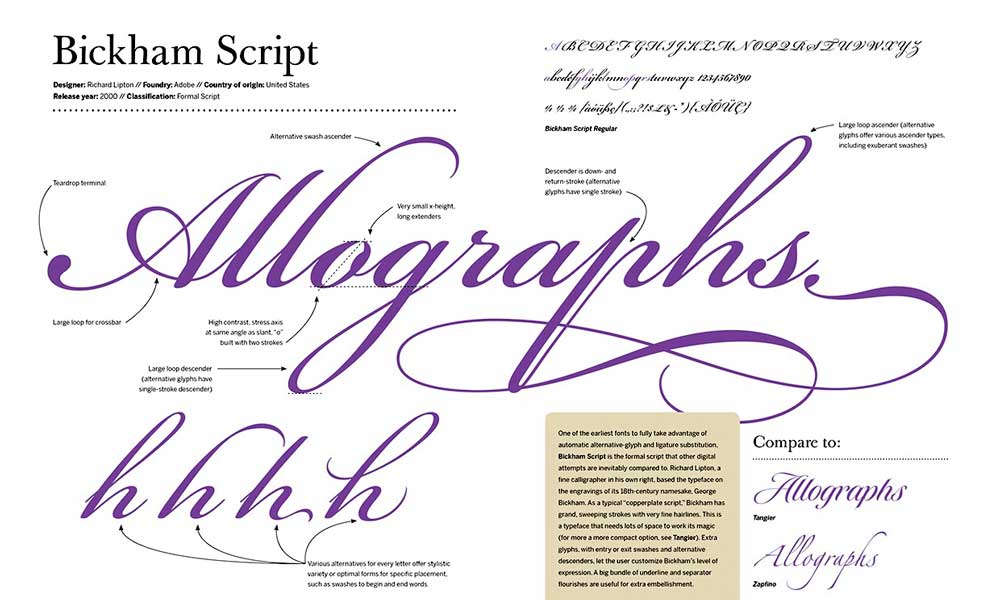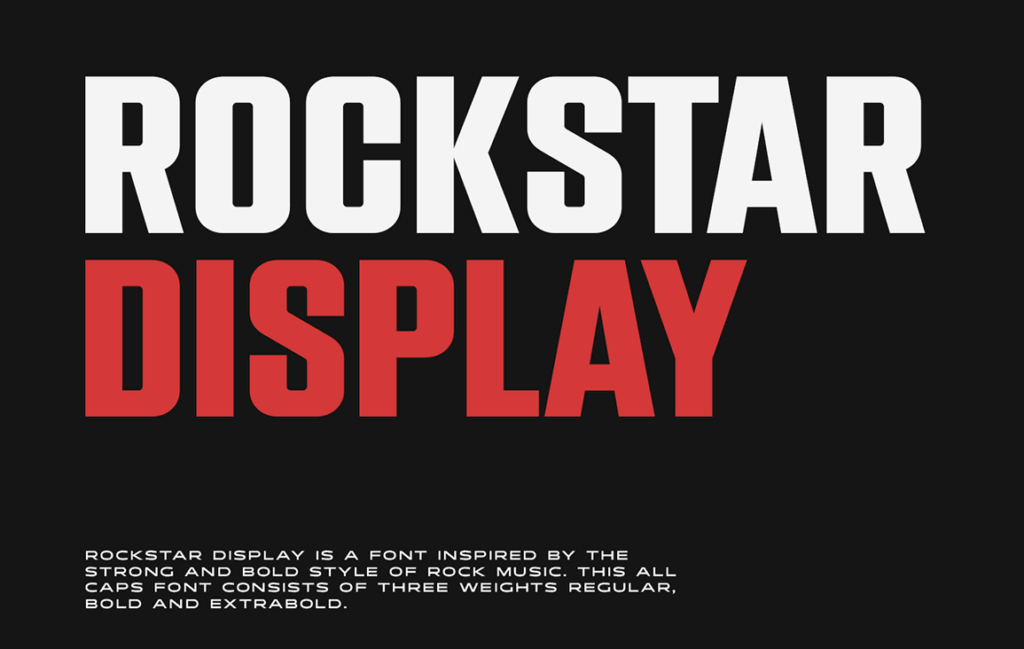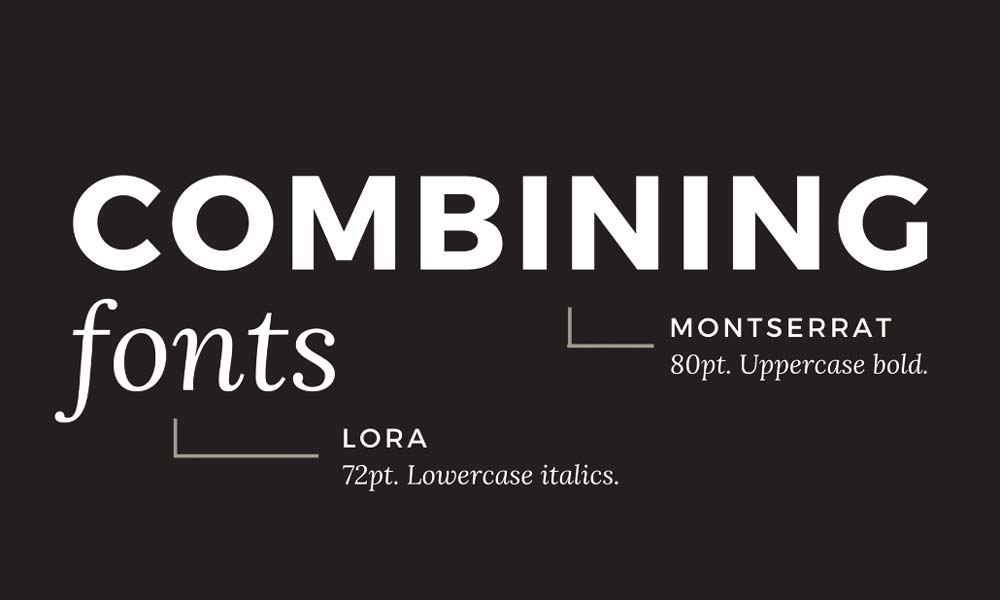A Guide to Understanding Different Types of Fonts
In the dynamic design world, few elements hold as much power to shape perception, evoke emotion, and tell stories as effectively as typography. Fonts, often overlooked, are the unsung heroes of design, subtly weaving a narrative that complements and enhances the content they deliver. Welcome to “A Guide to Understanding Different Types of Fonts,” a journey that will introduce you to the thrilling world of typographic design.
Fonts are far from monotonous; they are a chorus of voices that whisper, shout, and sing perfectly with your message. They carry the weight of your narrative, visually representing the tone and mood you wish to convey. They can be bold and assertive, soft and elegant, or quirky and unconventional, each one offering a unique personality that can transform your design from ordinary to extraordinary.
Understanding the nuances between different types of fonts is about more than just learning to distinguish a Serif from a Sans Serif or a Script from a Display. It is about cultivating an eye for detail, a sensibility to context, and a refined understanding of how letters can be orchestrated in diverse shapes and sizes to create compelling communication.
Whether you are a novice dipping your toes into the fascinating design world or an experienced professional looking to expand your typographic repertoire, this guide is your compass. It will navigate you through the sea of fonts, unravel the mysteries behind their design, and equip you with the knowledge to select the right font for every occasion. So buckle up and prepare to embark on an exciting voyage into the captivating universe of fonts. Welcome to the world of typography!
Table of Contents
Serif Fonts: Classic Elegance for Timeless Appeal

Serif fonts, characterised by the small decorative strokes at the ends of letters, exude a sense of tradition, elegance, and formality. They are widely used in print media, such as books, newspapers, and magazines, where readability is crucial. Serif fonts are also favoured in formal invitations and prestigious brand identities. This section will explore the subcategories of serif fonts and their respective characteristics.
1.1 Old-Style Serif Fonts
Old-style serif fonts, such as Garamond and Caslon, trace their origins back to the Renaissance era. They feature a calligraphic style with low stroke contrast and diagonal stress, creating a harmonious and flowing appearance. These fonts are ideal for conveying a sense of tradition and sophistication in long-form texts like books and academic journals.
Powered by Creative Market1.2 Transitional Serif Fonts
Transitional serif fonts, including Times New Roman and Baskerville, emerged during the 18th century as a refinement of the old-style fonts. They exhibit a more pronounced contrast between thick and thin strokes and vertical stress. Transitional serif fonts balance elegance and readability, making them suitable for various applications, such as newspapers, magazines, and business documents.
Powered by Creative Market1.3 Modern Serif Fonts
Modern serif fonts, exemplified by Bodoni and Didot, emerged in the late 18th century as a departure from traditional designs. These fonts feature high-stroke contrast, hairline serifs, and vertical stress. With their dramatic and bold appearance, modern serif fonts are often used in high-end fashion magazines, luxury brand identities, and prestigious editorial designs.
Powered by Creative Market1.4 Slab Serif Fonts
Slab serif fonts, or Egyptian or square serif fonts, are characterised by their thick, block-like serifs. They originated in the early 19th century and were popularised as display typefaces for advertising and headlines. Slab serif fonts, such as Rockwell and Courier, are highly versatile and can convey a range of moods, from rugged and masculine to modern and approachable.
Powered by Creative MarketSans-Serif Fonts: Simplicity and Modernity for Clarity and Impact

As the name suggests, Sans-serif fonts lack the decorative strokes at the ends of letters. They are known for their clean, minimalist appearance, conveying a sense of simplicity, modernity, and efficiency. Sans-serif fonts are widely used in digital media, user interfaces, and contemporary brand identities. Let's delve into the different categories of sans-serif fonts and their distinct characteristics.
2.1 Grotesque Sans-Serif Fonts
Grotesque sans-serif fonts, including Helvetica and Univers, originated in the 19th century and were developed to provide a more uniform and legible alternative to the ornate serif fonts of the time. These fonts have a neutral and functional aesthetic, making them suitable for various applications, from body text in print materials to signage and digital interfaces. Grotesque sans-serif fonts offer excellent readability and versatility, making them popular among designers seeking a clean, straightforward typographic solution.
Powered by Creative Market2.2 Geometric Sans-Serif Fonts
Geometric sans-serif fonts, such as Futura and Avant Garde, emerged in the early 20th century as a response to the rise of geometric shapes and industrial design. These fonts are characterised by their precise, geometric letterforms with minimal variation in stroke width. Geometric sans-serif fonts convey a sense of modernity, simplicity, and visual impact, making them ideal for logos, headlines, and contemporary designs requiring a solid presence.
Powered by Creative Market2.3 Humanist Sans-Serif Fonts
Humanist sans-serif fonts, like Frutiger and Myriad, draw inspiration from calligraphic letterforms and human handwriting. They feature subtle variations in stroke width, angled terminals, and a more organic and human-like appearance. Humanist sans-serif fonts balance legibility and personality, making them suitable for various applications, including body text, corporate branding, and user interfaces that require a friendly and approachable feel.
Powered by Creative Market2.4 Neo-Grotesque Sans-Serif Fonts
Neo-grotesque sans-serif fonts, such as Arial and Helvetica Neue, evolved from the original grotesque fonts with refined and updated letterforms. These fonts offer a clean, contemporary aesthetic with improved legibility, making them widely adopted for print and digital design. Neo-grotesque sans-serif fonts are often favoured for their neutrality and versatility, allowing them to integrate into various design contexts seamlessly.
Powered by Creative MarketScript Fonts: Elegance and Personal Touch for Artistic Expression

Script fonts mimic cursive handwriting and evoke a sense of elegance, fluidity, and personal touch. They are commonly used where a sophisticated or whimsical aesthetic is desired. Script fonts vary from formal and traditional to playful and casual, offering designers a broad range of options. Let's explore the subcategories of script fonts and their unique characteristics.
3.1 Formal Script Fonts
Formal script fonts, such as Edwardian and Bickham Script, emulate traditional calligraphic scripts with elaborate flourishes and swashes. These fonts are commonly associated with formal invitations, certificates, and high-end branding. Formal script fonts add a touch of elegance and refinement to designs, making them suitable for occasions that require a sense of grandeur and sophistication.
Powered by Creative Market3.2 Casual Script Fonts
Casual script fonts, like Pacifico and Brush Script, have a more relaxed and playful appearance. They mimic handwritten lettering with a looser, less structured feel. Casual script fonts are often used in designs that convey a friendly, approachable, and informal vibe. They are popular in branding, packaging, and creative projects that seek to inject a personal touch and a sense of authenticity.
Powered by Creative Market3.3 Calligraphic Script Fonts
Calligraphic script fonts, such as Zapfino and Poetica, capture the intricacies of hand calligraphy. These fonts feature multiple stylistic alternates, ligatures, and swashes, allowing for a high level of customisation and a truly handcrafted feel. Calligraphic script fonts are well-suited for luxury branding, wedding invitations, and any design requiring artistic expression and individuality.
Powered by Creative MarketDisplay Fonts: Bold and Eye-Catching Typography for Impactful Designs

Display fonts, sometimes decorative or novelty, are designed to grab attention and create a visual impact. These fonts come in a vast array of styles and often push the boundaries of traditional typography. Display fonts are typically used for headline text, logos, posters, and other design elements that require a bold and eye-catching typographic treatment. Let's explore some popular categories of display fonts and their distinctive characteristics.
4.1 Decorative Display Fonts
Decorative display fonts encompass various styles, from ornate and intricate designs to quirky and whimsical letterforms. These fonts are meant to add a unique visual flair to a design and often serve as focal points. Decorative display fonts are commonly used in branding, packaging, and creative projects that demand high creativity and visual impact.
Powered by Creative Market4.2 Grunge and Distorted Fonts
Grunge and distorted fonts emulate a worn-out, distressed, or grungy appearance. These fonts are characterised by irregular shapes, rough edges, and textures, which give designs a raw and edgy vibe. Grunge and distorted fonts are popular in music-related designs, urban-themed projects, and any context where a rebellious or vintage aesthetic is desired.
Powered by Creative Market4.3 3D and Dimensional Fonts
3D and dimensional fonts create the illusion of depth and three-dimensionality. These fonts often feature shading, shadows, and perspective effects, giving them a realistic and immersive quality. 3D and dimensional fonts are commonly used in signage, logo design, and any application where designers want to add depth and visual interest to their typographic compositions.
Powered by Creative Market4.4 Display Serif Fonts
As the name suggests, display serif fonts are specifically designed for large-scale usages, such as headlines or titles. These fonts feature exaggerated serifs, high contrast, and intricate details, which make them visually striking and attention-grabbing. Display serif fonts can evoke a sense of elegance, luxury, or vintage charm, depending on the specific style chosen.
Powered by Creative MarketBest Practices for Choosing and Pairing Fonts

Now that we've explored the various types of fonts, it's essential to understand some best practices for choosing and pairing them effectively. Here are some guidelines to keep in mind when working with typography:
- Consider the Context: Consider your design project's purpose, audience, and medium. Fonts should align with the message and visual style you want to convey. A formal business document may require a professional serif font, while a youthful brand might benefit from a playful sans-serif.
- Maintain Readability: Legibility should always be a top priority, regardless of font choice. Ensure the selected font is easily read at various sizes and across different devices or mediums. Avoid excessively ornate or complex fonts for long blocks of text.
- Create Contrast: Pair fonts with contrasting styles to create visual interest and hierarchy. Combining a serif font with a sans-serif font or a script font with a clean, modern font can create a pleasing contrast that helps guide the reader's eye.
- Limit the Number of Fonts: To maintain a cohesive and harmonious design, using a maximum of three fonts in a single project is generally recommended. Using too many fonts can lead to visual clutter and confusion.
- Ensure Compatibility: When selecting fonts for digital projects, consider cross-platform compatibility and web accessibility. Use web-safe fonts or embed custom fonts to ensure consistency across different devices and browsers.
- Consider Brand Personality: Fonts play a significant role in shaping a brand's identity. Choose fonts that align with the personality, values, and target audience of the brand you're working with. A modern tech company may opt for sleek, minimalist fonts, while a vintage-inspired brand may lean towards retro or script fonts.
- Experiment and Iterate: Feel free to experiment with different font combinations and layouts. Typography is a creative process; exploring other options can produce unexpected and exciting results. Take the time to test various font pairings, sizes, and spacing to find the perfect balance for your design.
- Consider Accessibility: Accessibility should be a priority when choosing fonts, especially for digital content. Select legible fonts for users with visual impairments and consider factors such as contrast, size, and readability guidelines to ensure that your design is inclusive and accessible to all users.
- Seek Inspiration: Keep an eye on current design trends and seek inspiration from reputable sources. Browse through typography showcases, design blogs, and online communities to discover new fonts and see how they are effectively used in different design contexts.
- Trust Your Instincts: While guidelines and best practices are helpful, trust your instincts and creative judgment. Ultimately, the choice of fonts should align with your design vision and the emotions or messages you want to convey.
By following these best practices, you can make informed decisions when selecting and pairing fonts, resulting in visually pleasing and impactful designs that effectively communicate your intended message.
Conclusion
Typography is a powerful tool in graphic design, and understanding the different types of fonts and their characteristics is essential for creating visually engaging and practical techniques. Whether designing a logo, crafting a website, or designing a print publication, the right font choice can significantly impact your project's overall aesthetic and message.
In this guide, we explored the main categories of fonts, including serif fonts, sans-serif fonts, script fonts, and display fonts, and delved into the distinctive characteristics of each type. We also discussed best practices for choosing and pairing fonts, emphasising the importance of context, readability, contrast, and brand personality.
Remember, typography is a dynamic and evolving field, and staying updated with current trends and design practices is crucial. Continue exploring and experimenting with fonts to expand your typographic repertoire and create designs that captivate and inspire.
So, the next time you embark on a design project, take the time to consider the nuances of typography and select the perfect font that not only enhances the visual appeal but also communicates the intended message effectively. With the right font choices, you'll elevate your designs and leave a lasting impression on your audience.
